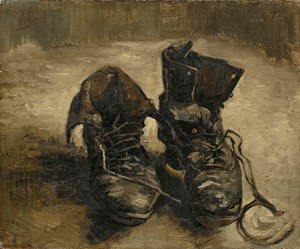
The fire at Brazil’s National Museum in Rio di Janeiro has Brazilians and the world in mourning. According to the institution’s deputy director, Cristina Serejo, only 10 percent of one of the continent’s most emblematic art and science collections survived.
Museums open minds, and they are not here forever
The fire at Brazil’s National Museum in Rio di Janeiro has Brazilians and the world in mourning. According to the institution’s deputy director, Cristina Serejo, only 10 percent of one of the continent’s most emblematic art and science collections survived.
The burning of Luzia, the oldest example of humans remains in America; of a library with more than 500,000 books, 1,560 of them unique; and of Latin America’s most important collection of Egyptian mummies is much more than a loss of cultural and scientific knowledge. Each of these objects contained a universe it revealed to the museum’s visitor.
Writing about the essence of artworks, German philosopher Martin Heidegger uses a beautiful example that can be used to illustrate a museum visitor’s experience. Vincent van Gogh’s Shoes (1886) is an oil on canvas depicting a pair of old peasant boots. To the German thinker the image of these shoes unveils its owner’s entire world. “In the stiffly solid heaviness of the shoes there is the accumulated tenacity of her slow trudge through the far-spreading and ever uniform furrows of the field, swept by a raw wind,” he writes in The Origin of the Work of Art. “On the leather there lies the dampness and saturation of the soil. Under the soles there slides the loneliness of the field-path as the evening declines...”

Image: Shoes, Vincent van Gogh, 1886
Though the text speaks of artworks specifically, Luzia, the 26,000 fossils and Brazil’s National Museum’s meteoroid conveyed existences that reveal how magnificent and infinitely complex the world actually is. The image used by German thinker Gottfried Leibniz to describe the latter is a universe made up infinite monads (tiny particles) and each contains a universe of its own.
There’s no need to be an expert in history or art history to enjoy a museum. Curiosity and an open mind is all it takes to tap into the cosmos of the object before you. The latter is a way of seeing and inhabiting the world. In Ancient Greek temples –to use another of Heidegger’s examples- men and women coexisted with their gods, heroes like Achilles were truly semi-divine, and through Alexander the Great’s veins flowed Zeus’ blood. The cathedrals of the Christian Middle Ages were the result of a completely different worldview. In it semi-divine heroes didn’t exist but sinners and saints roamed the streets of European cities and villages, and hell and eternal damnation were real.
The bleak images of Brazilians crying at the entrance gate of their National Museum, and of the institution’s workers running into the burning building to try to rescue whatever they could get their hands on, remind us we cannot take museums for granted. Therefore, instead of assuming there will always be another day to go, we should head to one and discover the multiple worlds it was to offer.

ArtDependence Magazine is an international magazine covering all spheres of contemporary art, as well as modern and classical art.
ArtDependence features the latest art news, highlighting interviews with today’s most influential artists, galleries, curators, collectors, fair directors and individuals at the axis of the arts.
The magazine also covers series of articles and reviews on critical art events, new publications and other foremost happenings in the art world.
If you would like to submit events or editorial content to ArtDependence Magazine, please feel free to reach the magazine via the contact page.